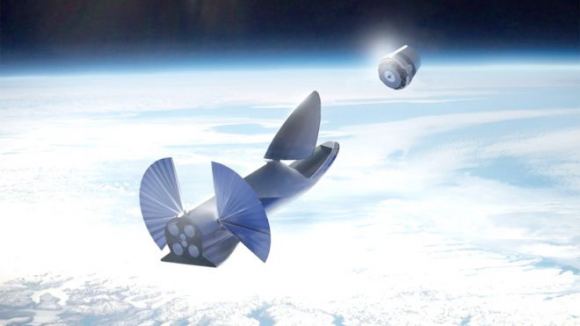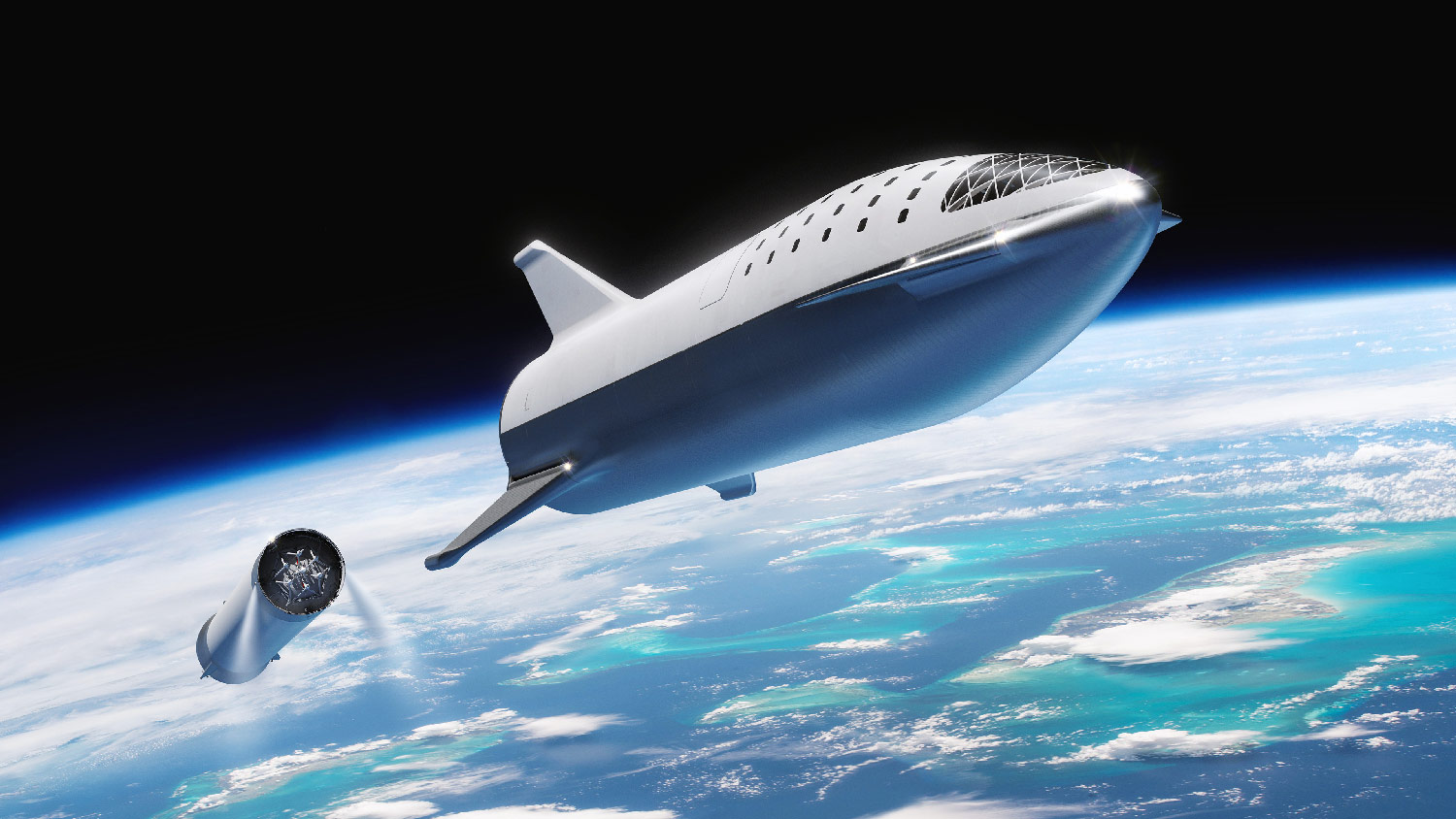In September of 2016, Musk treated the world to an early sneak-peak at his proposed super-heavy launch vehicle. Previously known as the Mars Colonial Transporter, the renamed Interplanetary Transport System (ITS) was the centerpiece to Musk’s long-term vision of conducting commercial trips to orbit, to the Moon, and even to Mars. Since that time, the mission architecture and even the name of the system have changed a few times.
For example, in September of 2017 – during a presentation titled “Making Life Interplanetary” – Musk presented the world with an updated design of launch system, which had been renamed the Big Falcon Rocket (BFR) and the Big Falcon Spacecraft (BFS). And just recently, Musk announced the system will henceforth be known as the “Starship”, and its rocket the “Super Heavy“.
The announcement was made earlier this week (on Nov. 19th) via Musk’s twitter account. As he said at the time “Renaming BFR to Starship”, followed by “Technically, two parts: Starship is the spaceship/upper stage & Super Heavy is the rocket booster needed to escape Earth’s deep gravity well (not needed for other planets or moons)”.
Technically, two parts: Starship is the spaceship/upper stage & Super Heavy is the rocket booster needed to escape Earth’s deep gravity well (not needed for other planets or moons)
— Elon Musk (@elonmusk) November 20, 2018
This announcement comes on the heels of Musk indicating that previous plans to make the second stage of the Falcon 9 reusable were being scrapped in order to focus on the development of the Starship. “Btw, SpaceX is no longer planning to upgrade Falcon 9 second stage for reusability,” he tweeted on Nov. 17. “Accelerating BFR instead. New design is very exciting! Delightfully counter-intuitive.”
Prior to that (on Nov. 7th) Musk tweeted that his company would be building a miniature, winged version of the Starship to test its design. This mini-Starship, he claimed, will be launched atop a Falcon 9 or Falcon Heavy rocket as early as June 2019 (which is expected to coincide with the launch of the first batch of SpaceX’s Starlink satellites).
While Musk did not reveal any new details about the design for the spacecraft, it is safe to say that it will resemble the updated schematics that Musk presented back in September. It was at this time, during a press conference at SpaceX headquarters in California, that Musk shared who the first passengers aboard the BFR would be – Japanese fashion innovator/art curator, Yusaku Maezawa, and a group of artists.

This mission, which is intended to help fund the development of the super-heavy launch vehicle, is scheduled to take place in 2023 and will be the first private lunar passenger flight. The mission will last a full week and will involve the Spaceship conducting a flyby of the Moon – getting as close as 200 km (125 mi) from the surface – before returning to Earth.
The Starship is intended to eventually replace the Falcon 9 and Falcon Heavy vehicles, and is projected to cost an estimated $5 billion USD to build. As Musk has indicated many times in the past, the completed system will be used to conduct lunar tourism flights around the Moon, and also for the sake of commercial transport between major cities.
However, the ultimate purpose of the Starship is to conduct regular flights to Mars and facilitate the construction of a permanent human settlement there. In September, Musk provided an updated look at what his proposed base (named Mars Base Alpha) would look like. When asked when this base might become a reality, he tweeted, “Probably 2028 for a base to be built.”
At present, SpaceX hopes to conduct the first suborbital test flights of the Starship in the coming year while Musk has stated that he hopes to commence cargo flights as early as 2022, followed by the first crewed flight to Mars by 2024. As it states on their website:
“The objectives for the first mission will be to confirm water resources, identify hazards, and put in place initial power, mining, and life support infrastructure. A second mission, with both cargo and crew, is targeted for 2024, with primary objectives of building a propellant depot and preparing for future crew flights. The ships from these initial missions will also serve as the beginnings of the first Mars base, from which we can build a thriving city and eventually a self-sustaining civilization on Mars.”
It has been a busy year for Musk and the company he founded with the intention of reinvigorating space exploration, and not all of the news has been good. But when it comes to the strides his company is taking with their super-heavy launch vehicle (now known as the Starship, maybe something else later), Musk has managed to inspire and capture the imaginations of countless people across the planet.
Even if there bumps along the way or timelines need to revised, there is no shortage of people that want him to succeed.
Further Reading: BBC


Man, that Earth to Earth Vision is one heck of a bite. They will be chewing on that hunk of gristle for a long while.